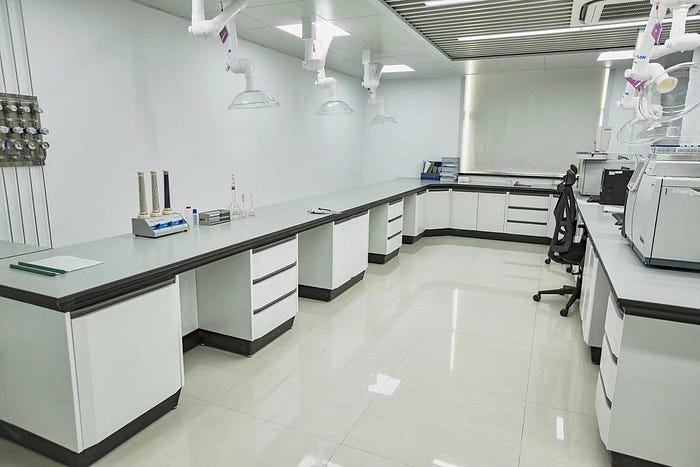Laboratories are at the forefront of scientific research and innovation, and the design and functionality of laboratory furniture play a crucial role in facilitating efficient and productive work. Laboratory furniture is specifically designed to meet the unique requirements of scientific environments, providing a safe and organized space for researchers to conduct experiments, handle sensitive materials, and store equipment.
When it comes to laboratory furniture, it’s essential to consider not only aesthetics but also functionality, ergonomics, and safety. Integrated solutions that take into account the specific needs of a lab can greatly enhance its overall efficiency and effectiveness. In this blog post, we will explore some key aspects of laboratory furniture and how integrated solutions can optimize lab spaces.

1.Customization: Laboratory furniture should be tailored to the specific requirements of the lab. Each research facility has its own set of needs, whether it’s a chemistry lab, a biological research lab, or a cleanroom environment. Integrated solutions allow for customization, ensuring that the furniture seamlessly integrates with the lab’s workflow and maximizes available space.
2.Ergonomics: Researchers spend long hours in the laboratory, conducting intricate experiments and handling delicate instruments. Ergonomically designed furniture reduces the risk of repetitive strain injuries and musculoskeletal disorders. Adjustable workstations, comfortable seating, and optimized layout contribute to a healthier and more productive work environment.
3.Safety and Compliance: Laboratories deal with hazardous materials and sensitive experiments, making safety a top priority. Integrated solutions for laboratory furniture incorporate safety features such as chemical-resistant surfaces, integrated fume hoods, fireproof cabinets, and safety interlocks. Compliance with relevant regulations and standards is essential to ensure the well-being of lab personnel and the integrity of the research.
4.Organization and Storage: Laboratories require efficient storage solutions to house equipment, chemicals, samples, and supplies. Integrated furniture systems provide ample storage options, including cabinets, shelving, and drawers, all designed to maximize space utilization and facilitate easy access to materials. Smart storage solutions enhance workflow efficiency and contribute to a clutter-free and safe working environment.
5.Technology Integration: Modern labs heavily rely on advanced technology and instrumentation. Integrated solutions for laboratory furniture incorporate provisions for the integration of electrical outlets, data ports, and other technological infrastructure. This ensures seamless connectivity for devices, enabling efficient data transfer, and streamlining laboratory operations.
6.Future Adaptability: Research environments are constantly evolving, with changing needs and emerging technologies. Integrated laboratory furniture solutions are designed with flexibility in mind, allowing for future adaptations and reconfigurations as the lab’s requirements evolve over time. Modular furniture systems make it easier to accommodate new equipment, changing workflows, or expanding research areas.
In conclusion, laboratory furniture libya is a critical component of any scientific facility. Integrated solutions take into account the unique needs of laboratories, offering customizable, ergonomic, safe, and organized workspaces. By investing in well-designed laboratory furniture, research institutions can optimize their operations, enhance productivity, and create an environment conducive to scientific discovery and innovation.
Reference Link(OriginallyPosted: https://medium.com/@ziebaqtechnology/laboratory-furniture-designing-integrated-solutions-for-modern-labs-34f0fc93fd8c
Comments
Post a Comment